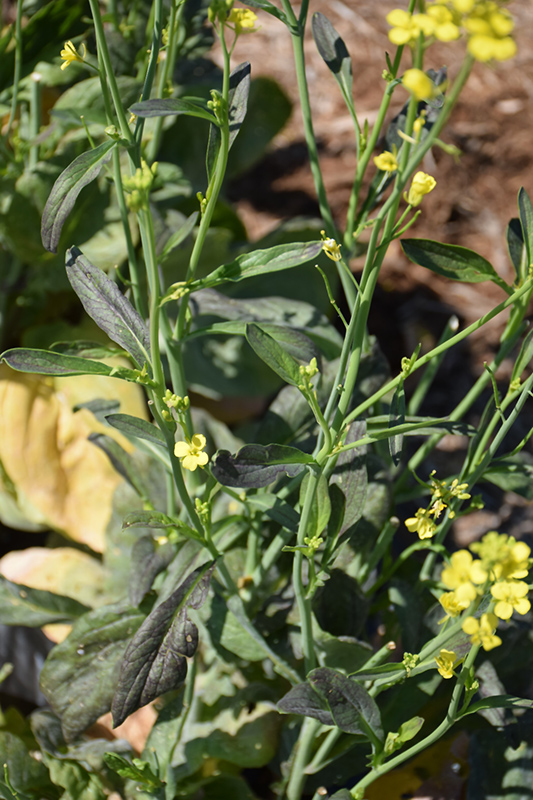Plant Finder
Osaka Purple Mustard
Brassica juncea 'Osaka Purple'
Height: 18 inches
Spacing: 10 inches
Sunlight:
![]()
![]()
Hardiness Zone: (annual)
Description:
High yields of beautiful green foliage with blushes of deep purple; perfect for containers and harvestable as microgreens, baby or full grown; sweet micros and baby greens make the perfect addition to salads, while pungent mature leaves are best cooked
Edible Qualities
Osaka Purple Mustard is an annual vegetable plant that is typically grown for its edible qualities. The oval green leaves with showy plum purple variegation are usually harvested from late spring to mid fall. The leaves have a delicious taste.
The leaves are most often used in the following ways:
- Fresh Eating
- Eating When Cooked/Prepared
- Cooking
- Pickling
Planting & Growing
Osaka Purple Mustard will grow to be about 18 inches tall at maturity, with a spread of 12 inches. When planted in rows, individual plants should be spaced approximately 10 inches apart. This fast-growing vegetable plant is an annual, which means that it will grow for one season in your garden and then die after producing a crop. Because of its relatively short time to maturity, it lends itself to a series of successive plantings each staggered by a week or two; this will prolong the effective harvest period.
This plant is typically grown in a designated vegetable garden. It does best in full sun to partial shade. It does best in average to evenly moist conditions, but will not tolerate standing water. It is not particular as to soil pH, but grows best in rich soils. It is somewhat tolerant of urban pollution. This is a selected variety of a species not originally from North America.
Osaka Purple Mustard is a good choice for the vegetable garden, but it is also well-suited for use in outdoor pots and containers. It is often used as a 'filler' in the 'spiller-thriller-filler' container combination, providing a canvas of foliage against which the larger thriller plants stand out. Note that when growing plants in outdoor containers and baskets, they may require more frequent waterings than they would in the yard or garden.




